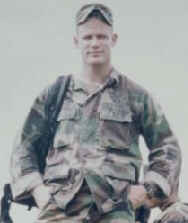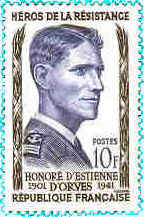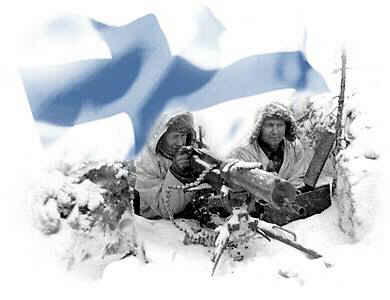| <<
Jan 03| HISTORY
“4” “2”DAY
|Jan 05
>> Events, deaths, births, of JAN 04 [For Jan 04 Julian go to Gregorian date: 1583~1699: Jan 14 — 1700s: Jan 15 — 1800s: Jan 16 — 1900~2099: Jan 17] |
1990 Deposed Panamanian dictator Manuel Noriega is
arraigned in federal district court in Miami on drug-trafficking charges.
|
| 1979 El Sha del Irán abandona Teherán camino del exilio. 1978 Se crea el Consejo General del País Vasco, con Jesús María de Leizaola como primer lehendakari. 1975 Ice thickness measured at 4776 m, Wilkes Land, Antarctica 1974 US President Richard Nixon refuses to hand over tape recordings and documents subpoenaed by the Senate Watergate Committee. 1974 Carlos Arias Navarro forma Gobierno en España. 1971 Anwar el Sadat reconoce la presencia militar soviética en Egipto. 1970 New York City NY transit fare rises from 20¢ to 30¢, new larger tokens used 1969 Firma en Fez del tratado de retrocesión del territorio de Ifni de España a Marruecos. 1965 In his 2nd annual State of the Union address, US President Lyndon B. Johnson outlines the goals of his "Great Society". He also reaffirms US commitment to support South Vietnam in fighting communist aggression. He notes that US presidents have been giving the South Vietnamese help for 10 years, and says: "Our own security is tied to the peace of Asia." 1963 Soviet Luna (4) reaches Earth orbit but fails to reach Moon 1962 first automated (unmanned) subway train (New York City NY) 1961 Longest recorded strike ends — 33 years — Danish barbers' assistants 1960 Gran Bretaña, Suecia, Noruega, Dinamarca, Suiza, Austria y Portugal firman en Londres el tratado fundacional de la Asociación Europea de Libre Cambio (EFTA). 1958 Edmund Percival Hillary alcanza el Polo Sur. 1951 During Korean conflict, North Korean and Communist Chinese forces capture Seoul.
|
1932 British East Indies Viceroy Willingdon arrests Gandhi and Nehru. 1929 Las dos Fundaciones Rockefeller se funden en una, que se convierte en la organización filantrópica más poderosa del mundo. 1925 French psychologist Emil Coué brings his self-esteem therapy to US "Every day in every way I am getting better and better" 1923 Second part of Lenin's "Political Testament" calls for removal of Stalin. — En un post scriptum a su "testamento", Lenin recomienda la destitución de Josif Stalin. 1918 El gobierno soviético reconoce la independencia de Finlandia. 1915 Trans-Caucausus Russians defeat Turkish troops 1912 Smallest earth-moon distance in the 20th century, 356'375 km center-to-center 1904 US Supreme Court rules that Puerto Ricans cannot be denied admission to US. |
1893 US President Cleveland grants amnesty to Mormon polygamy 1889 In Australia, Colin Wardrop, head of the National Bank of Queensland, mails a postcard to Miss Wardrop at 32 Carden Place, Aberdeen, Scotland. The postcard would arrive in February 2001, and on 26 February 2001 be air-mailed back to sender's grand-daughter, Alison Britts, 74, in New South Wales. 1887 Thomas Stevens is first man to bicycle around the world (San Francisco-San Francisco, 21'700km) 1885 Dr W W Grant of Iowa, performs first appendectomy (on Mary Gartside, 22) 1884 In Ontario, last sighting of an eastern cougar. 1874 Levantamiento republicano en Zaragoza a causa del golpe de Estado del general Manuel Pavía Rodríguez de Albuquerque. 1865 The New York Stock Exchange opens its first permanent headquarters 1861 Alabama state troops seize the US Arsenal at Mount Vernon, Alabama
1832 Insurrection of Trinidad negroes. 1790 Las provincias belgas, excepto Luxemburgo, proclaman su independencia. 1762 England declares war on Spain and Naples 1725 Nineteen-year-old Benjamin Franklin arrives in London. 1717 Netherlands, England and France sign Triple Alliance. 1698 En virtud de la paz de Riswick, las tropas de Louis Joseph de Bourbon duc de Vendôme evacuan Barcelona.
1528 Ferdinand of Austria, younger brother to Holy Roman Emperor Charles V, issued the first secular mandate forbidding the Anabaptist religious movement. 1493 Columbus left new world on return from first voyage. — Cristóbal Colón embarca en la isla Española (Santo Domingo), en la carabela Niña, con destino a España, de regreso de su primer viaje. 1357 Flemish Earl Louis and Luxembourg Duke Wenceslaus sign peace treaty 0871 Battle at Reading Ethelred of Wessex beats Danish invasion army 0275 St Eutychian begins his reign as Pope (died 02831207) |
 Deaths
which occurred on a January 04: Deaths
which occurred on a January 04:2003 Dos mujeres fallecen y otras veinticuatro personas resultan heridas al descarrilar la locomotora, el furgón generador y el primer vagón de viajeros de un tren Talgo en las cercanías del apeadero de Tobarra (Albacete), España. 2002 Maria Grazia Malagisi, Italian born on 06 July 1891. 2002 Nael Ramadan, 22, Palestinian policeman, killed in Israeli incursion at dawn in the village Tel, near Nablus, West Bank. 2002 Nathan Ross Chapman, 31, Sgt. 1st Class, communications specialist, [photo >] by small-arms fire during an ambush in Afghanistan near Khost, a few km from the Pakistan border, following a meeting with local tribal leaders. Chapman is with a CIA officer, who is wounded. Chapman is the first US soldier to die from hostile fire in Afghanistan during the anti-terrorism campaign that began on 07 October as part of US President Bush's so-called “war”. 1999 Sixteen persons, as gunmen shoot at Shiite Muslim worshippers in a mosque in Islamabad, Pakistan. 25 persons are injured. 1999 José Vela Zanetti, pintor español. 1990 Alberto Lleras Camargo, presidente de Colombia. 1990 Charles Stuart, wife's murderer, suicide by driving off bridge. The previous day, his brother Matthew had met with Boston prosecutors and told them that Charles was the murderer of Charles's wife, Carol. The killing of Carol Stuart, who was pregnant at the time, on October 23, 1989, had touched off a national outrage when Charles Stuart told authorities that the couple had been robbed and shot by an African-American man while driving through a poor Boston neighborhood. In the summer and fall of 1989, both Boston daily newspapers had been trumpeting a so-called crime explosion. Actually, the screaming headlines had more to do with a desire to sell papers than any actual crime wave, but the public was on edge. Charles Stuart, a fur salesman, used the public mood to his advantage when he planned the murder of his wife. "My wife's been shot! I've been shot!" screamed Stuart into his cell phone as he drove through the Mission Hill area of Boston. Paramedics responding to the call for help found that both Charles and his wife had been shot. Carol was barely hanging on to her life and Charles had a fairly serious wound to the stomach. Immediately, Charles identified an African-American male in a black running suit as the perpetrator. The crime was the biggest story in Boston that day and even led some national newscasts. Across the country, the story was portrayed as an example of what could happen to affluent people traveling through bad neighborhoods. In many papers, liberal policies were attacked and held responsible for the tragedy. Carol Stuart died, and although doctors were able to save her baby temporarily, the child also died days later. Charles Stuart underwent intestinal surgery for 10 hours, but his life was not endangered. Blacks wrongly mistreated by police. The Boston police began to comb the housing projects in Mission Hill. African-American men were strip-searched on the streets on any pretense. Alan Swanson, a small-time drug dealer, was arrested on suspicion of being involved. However, there was absolutely no evidence against him, even after a warrant was falsified so that it would match what Charles Stuart had told investigators. He was later released with no apology from the police. Meanwhile, Stuart was showing unusual interest in a young female co-worker, asking that she phone him at the hospital where he was recovering. Detectives, fixated on finding the black perpetrator Stuart had described, didn't bother to find the ample evidence that Stuart was unhappy in his marriage and particularly upset with his wife for not having an abortion. Stuart had discussed both his obsession with the co-worker, and his desire to see his wife dead, with several friends and family members in the months before the murder. In December, Willie Bennett, an African-American ex-con, was arrested after his nephew jokingly bragged that he was responsible. Stuart picked Bennett out of a lineup in which the others were all clean-cut Boston police officers. This was the last straw for Matthew Stuart, who had assisted his brother in carrying out the scheme. Matthew thought he was helping Charles with an insurance scam when he carried a bag away from the murder scene. In it was the gun and the couple's wallets and jewelry. In return for immunity, Matthew testified against his brother. Charles Stuart found out that Matthew was going to turn him in and immediately fled. The next morning, Charles Stuart drove to the Tobin Bridge over the Mystic River, and jumped to his death. His suicide note said, "I am sorry for all the trouble." Willie Bennett was released after witnesses told a grand jury that the police had pressured them into identifying him. 1983: 30 oficiales afganos asesinados por sus propios soldados.Ola de atentados contra las posiciones soviéticas en Kabul (Afganistán). 1979 Serafín Adame, periodista y escritor español. 1974 Karel Janacek, 70, composer.
1965 T.S. Eliot, 76, in London, poet. 1961 Erwin Schrödinger, mathematician. 1960 Albert Camus, 46, French author (Stranger), in an automobile accident. — Premio Nobel 1957. 1958 Archie Alexander, mathematician. 1950 Snyder, mathematician. 1941 Henri Bergson, 81, French philosopher (Le Rire, Nobel 1928)
1926 Willem Karel Nakken, Dutch British artist born on 09 April 1835. 1920 Benito Pérez Galdós, novelista español. 1915 Anton Alexander von Werner, German artist born on 09 May 1843. — more 1913 Alfred von Schlieffen , 79, Prussian General then Field Marshal. 1901 Nicolas Gysis (or Gyzis), Greek artist born on 01 March 1842. 1900 Pieter Lodewijk Franciscus Kluyver, Dutch artist born on 22 March 1816. 1880 Anselm Feuerbach, German Neoclassical painter born on 12 August 1829. — MEHR ÜBER FEUERBACH AN ART “4” JANUARY with links to images.
1845 Louis-Léopold Boilly, French portrait and genre painter born on 05 July 1761. — MORE ON BOILLY AT ART “4” JANUARY with links to images. 1834 Mauro Gandolfi, Italian artist born on 18 September 1764. 1826 Fuss, mathematician. 1825 Ferdinand I, 73, King of Sicily/Naples (Ferdinand IV) 1821 Elizabeth Ann Seton first native-born American saint. Today is her feast day. 1778 Charles-Dominique-Joseph Eisen, French artist born on 17 August 1720. — MORE ON EISEN AT ART “4” JANUARY with links to images. 1752 Gabriel Cramer, 47, Swiss mathematician (paradox of Cramer) 1748 Coenraet Roepel, Dutch artist born on 06 November 1678. 1729 Joseph de Montesquiou Earl d'Artagnan, 77, French Lt-General. 1624 Vicente Martínev de Espinel, escritor y músico español. 1614 Luisa de Carvajal y Mendoza, escritora (de poesías y escritos autobiográficos) y religiosa española, en el día de su 48º cumpleaños, en Inglaterra a donde había ido para evangelizar a los protestantes y buscar martirio, y sufrió encarcelamientos y enfermedad. 1607 (burial) Gillis van Coninxloo III, Flemish landscape painter born on 24 January 1544. — MORE ON VAN CONINXLOO AT ART “4” JANUARY with links to images. 1584 Tobias Stimmer, Swiss artist born on 17 April 1539. 0749 San Rigoberto, arzobispo de Rheims. 0041 Gaius Cæsar Germanicus " Caligula", his wife Cæsonia, and their daughter, murdered. The Roman populace had grown weary of this mad and unpredictable tyrant. Caligula was murdered at the Palatine Games by Cassius Chærea, tribune of the Prætorian guard, Cornelius Sabinus, and others. |
| Births
which occurred on a January 05: 1955 New model Packard car. The 1955 Packards are introduced. Corvettes and Thunderbirds were upping the horsepower ante, and Packard struck back with the Packard Caribbean, the first V-8 Packard and the debut of highly stylized cathedral taillights. The era of the mighty tailfin was beginning.
1943 Jesús Torbado Carro, escritor y periodista español. 1921 Friedrich Dürrenmatt, escritor suizo. 1913 Manuel Andújar, escritor español. 1896 André Masson, French Surrealist painter who died in 1987. — MORE ON MASSON AT ART “4” JANUARY with links to images. 1896 Everett McKinley Dirksen, Republican leader of the US Senate (1959-1969). He died on 07 Sep 1969. 1895 Leroy Randle Grumman, US aeronautical engineer and founder of Grumman Aircraft. He died on 04 October 1982. 1890 Alfred G Jodl German Wehrmacht General/Chief of Staff. 1881 Wilhelm Lehmbruck, German sculptor who died on 25 March 1919. — LINKS 1863 Four-wheeled roller skates patented by James Plimpton of NY. 1861 Charles Schreyvogel, US artist who died on 27 January 1912. 1848 Suter, mathematician. 1838 midget Charles Sherwood Stratton) (1838-83), showman under the name "General Tom Thumb" (after miniature fairy-tale hero); 61 cm tall when first exhibited by P.T. Barnum; later grew to 100 cm. 1813 Sir Isaac Pitman, English educator and inventor of shorthand, who died on 12 January 1897. 1809 Louis Braille, Coupvray, France. Blinded at age 4, he would invent a raised dot alphabet for the blind to read and write. He would die from tuberculosis on 06 January 1852, before his system was widely adopted. 1797 Wilhelm Beer, German astronomer who made the first map of moon. He died on 27 March 1850.
1746 Benjamin Rush, US physician, political leader and signer of the Declaration of Independence. He died on 19 April 1813. 1745 Johann Georg Pforr, German artist who died on 09 June 1798. 1710 Giovanni Battista Pergolesi Italian composer (Il Prigioniero Superbo). He died on 16 March 1736. 1643 (25 December 1642 Julian) Isaac Newton, mathematician, scientist, in addition to theorizing about planetary orbits and gravity, he was the first scientist to examine the possibility of satellites. Newton hypothesized that a cannonball shot at high velocity would eventually orbit the Earth. He died in 1727. In a letter to Robert Hooke, Newton wrote: “If I have been able to see further, it was only because I stood on the shoulders of giants.” 1581 Bishop James Ussher Archbishop of Armagh. Based on a literal interpretation of Old Testament references, he considered paternity as a viable method by which the age of the Earth since its creation could be determined using the "begat" method of determining the antiquity of an event — essentially counting backward in time through each documented human generation. In 1650 Ussher determined that the Creation had occurred during the evening of 22 October 4004 BC. Ussher died on 21 March 1656. At present the earth is thought to be about 4.55 billion years old, creationists nothwithstanding. 1566 Luisa de Carvajal y Mendoza, en Jaraicejo (Cáceres), escritora y religiosa española, que irá a Inglaterra para evangelizar a los protestantes, y después de encarcelamientos y enfermedad, fallecerá allá el día de su 48º cumpleaños. 1477 Girolamo del Pacchia, Italian artist who died after 1533. |
Holidays Sri Lanka: Tamil Thai Pongal Day
_ Congo ex-Zaïre: Martyrs' Day
Santos Aquilino, Rigoberto, Roger, Cayo y Gregorio.
Santos Aquilino, Rigoberto, Roger, Cayo y Gregorio.
DICTIONNAIRE TICRANIEN GÉOGRAPHIQUE FRANÇAIS-ANGLAIS:
NANCY: prénom féminin.
Thought for the day: “We have nothing to fear because we have nothing.” — a student of John Canu's 3rd grade in an economically depressed area.
Thought for the day: “We have nothing to fear because we have nothing.” — a student of John Canu's 3rd grade in an economically depressed area.
PLEASE
CLICK HERE TO WRITE TO “HISTORY 4 2DAY”
http://www.safran-arts.com/42day/history/h4jan/h4jan04.html
http://members.xoom.virgilio.it/all42day/history/h4jan/h4jan04.html
http://h42day.0catch.com/history/h4jan/h4jan04.html
http://greatquotes.gq.nu/history/h4jan/h4jan04.html
updated Sunday 04-Jan-2004 14:17 UT
 site safe for children
site safe for children 
http://www.safran-arts.com/42day/history/h4jan/h4jan04.html
http://members.xoom.virgilio.it/all42day/history/h4jan/h4jan04.html
http://h42day.0catch.com/history/h4jan/h4jan04.html
http://greatquotes.gq.nu/history/h4jan/h4jan04.html
updated Sunday 04-Jan-2004 14:17 UT

 1940
Day 36 of Winter War: USSR aggression against Finland.
1940
Day 36 of Winter War: USSR aggression against Finland.